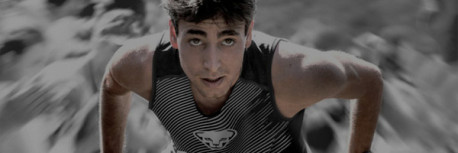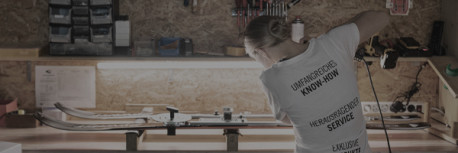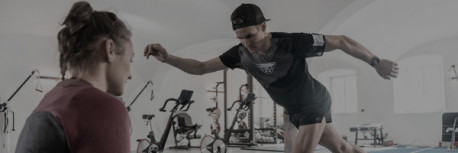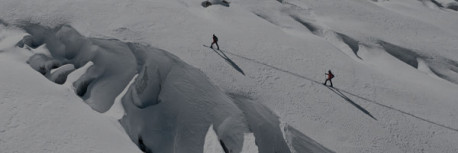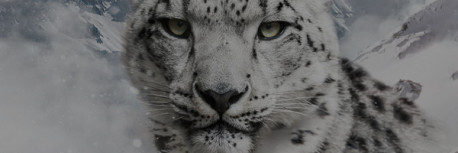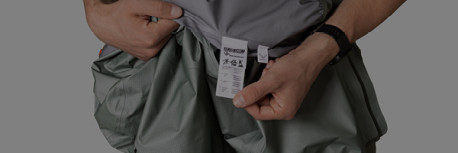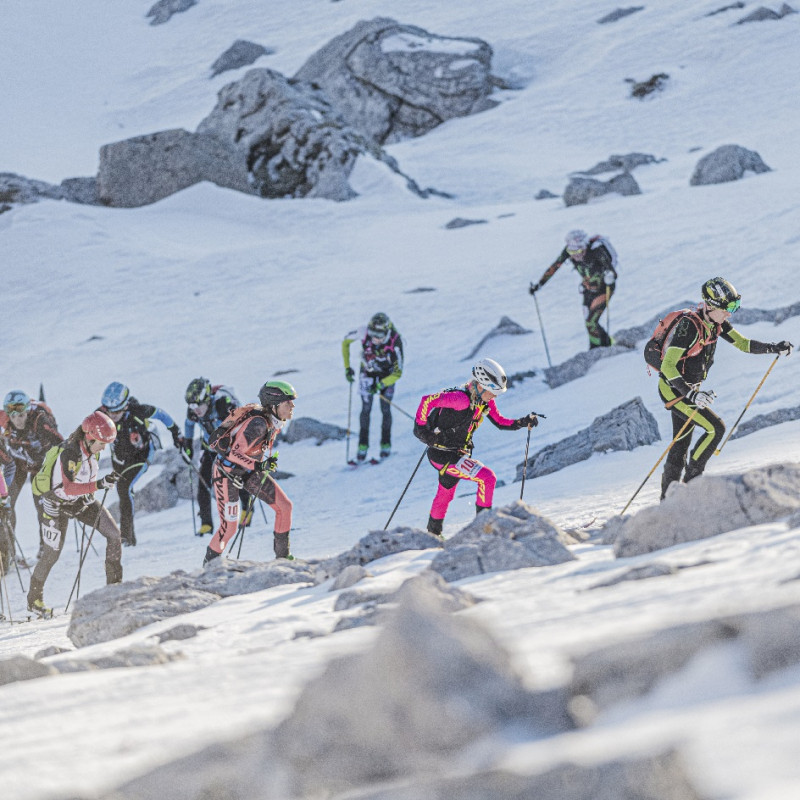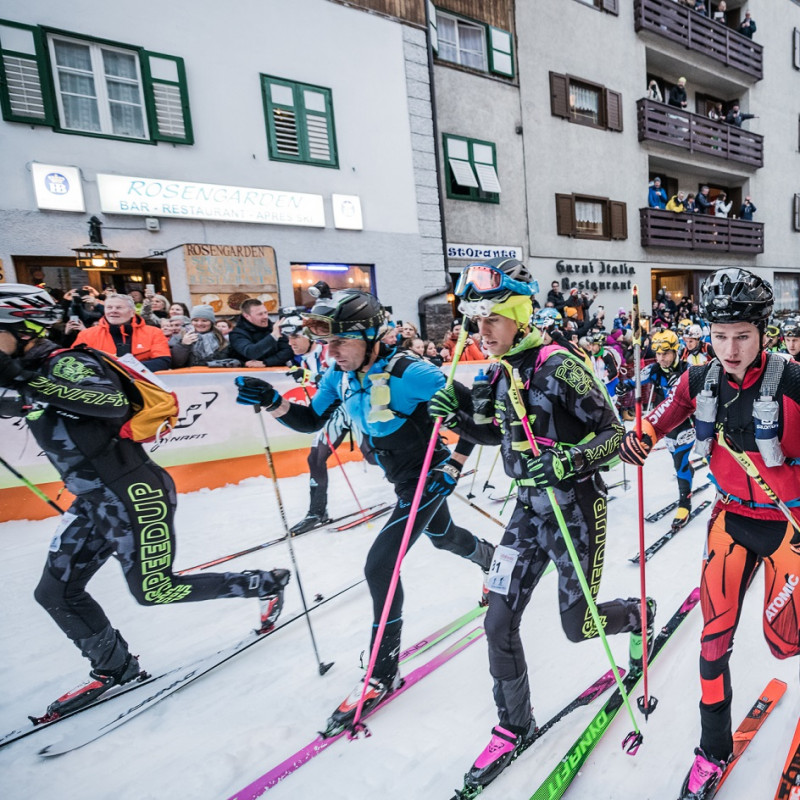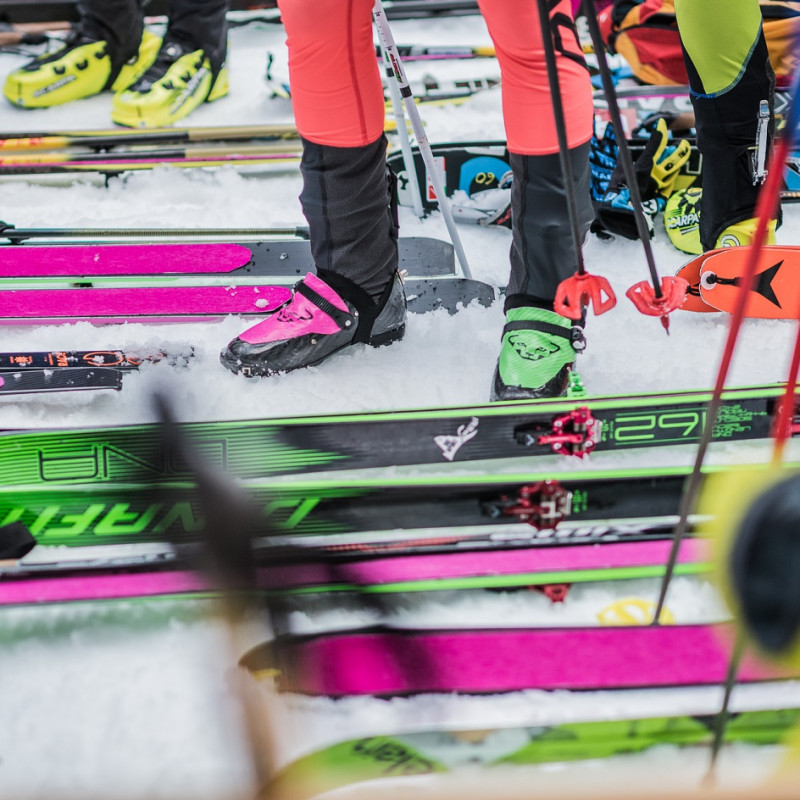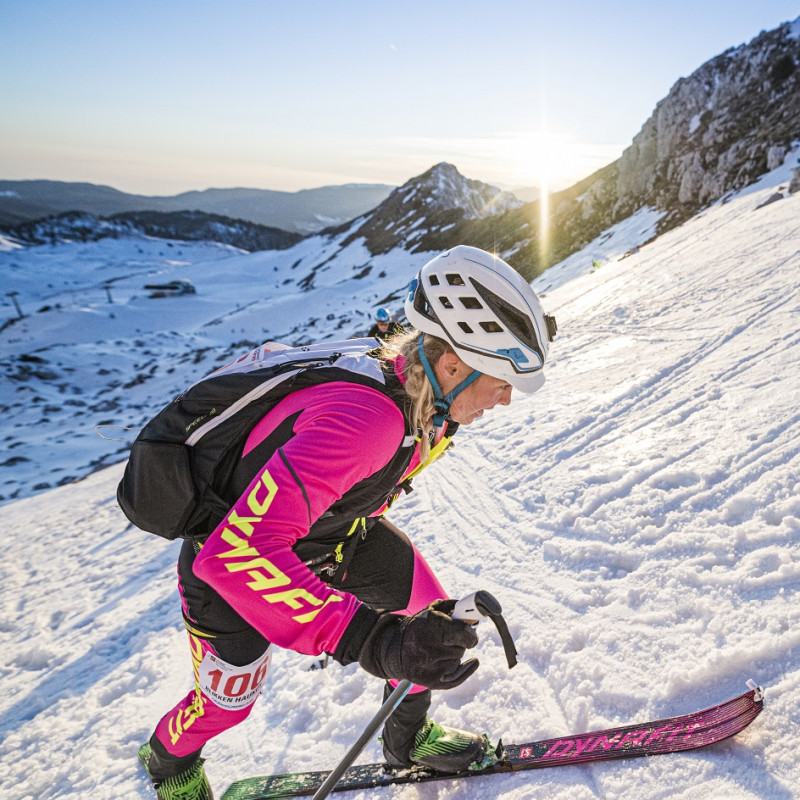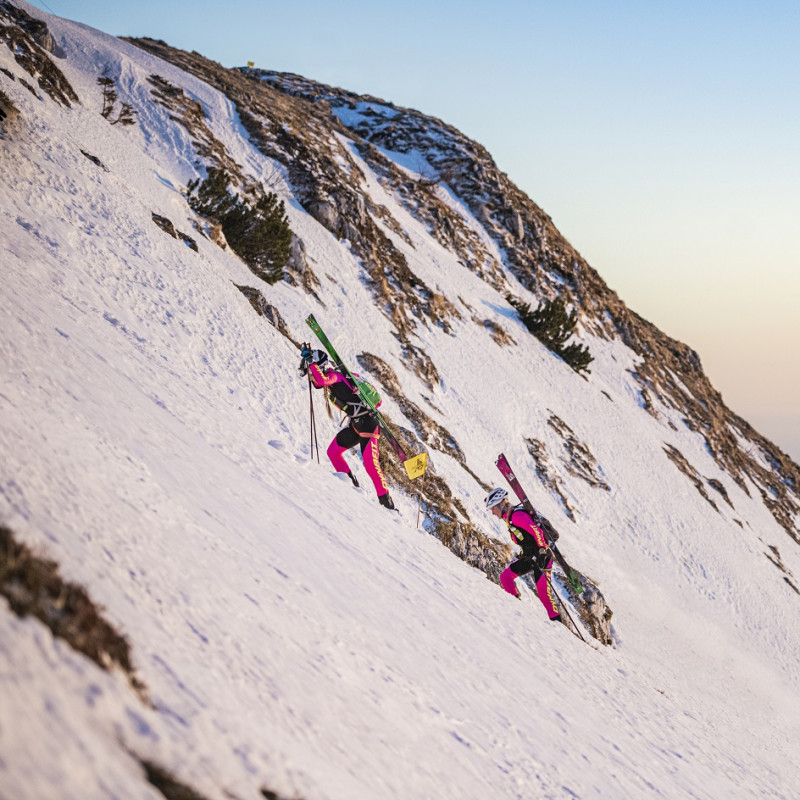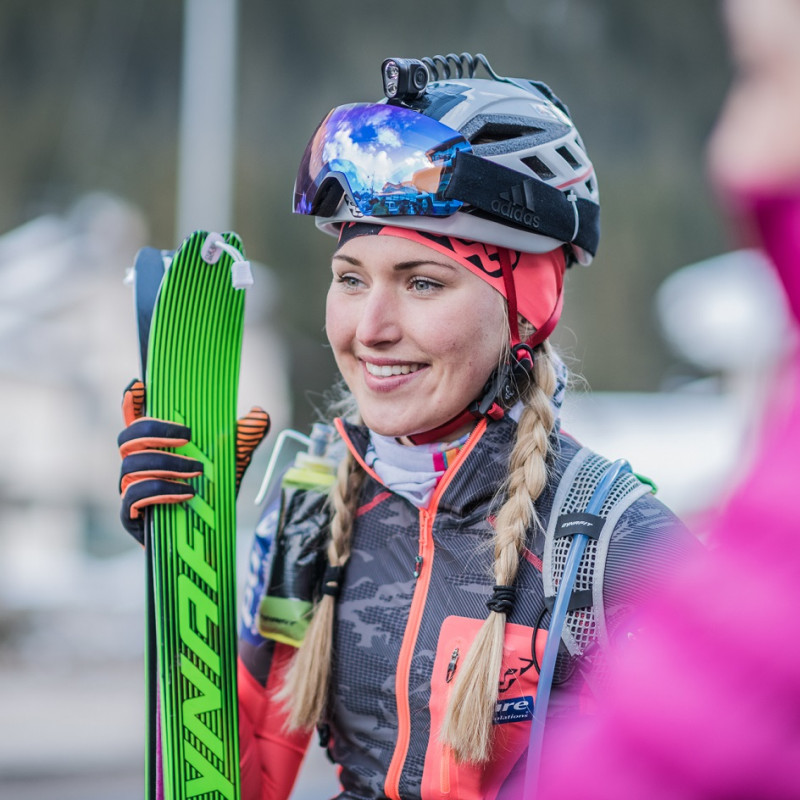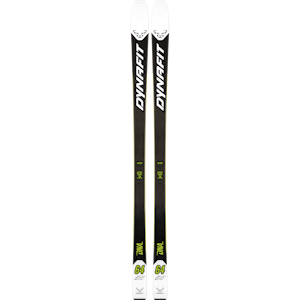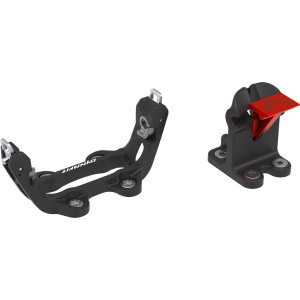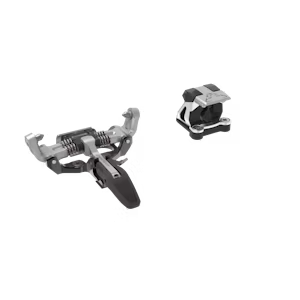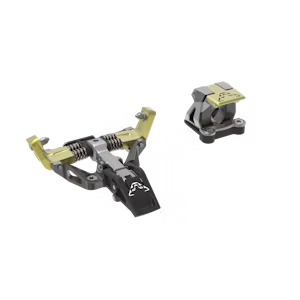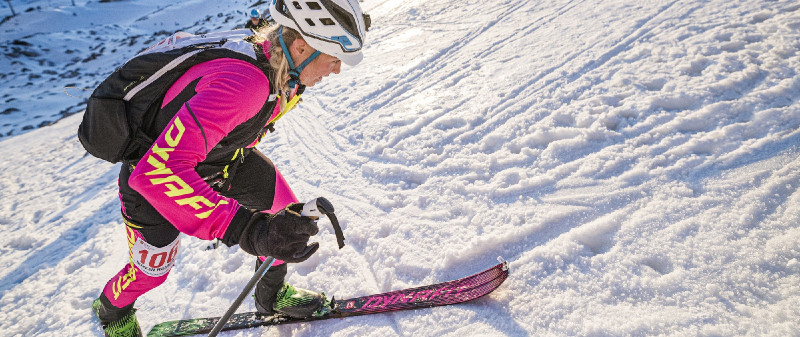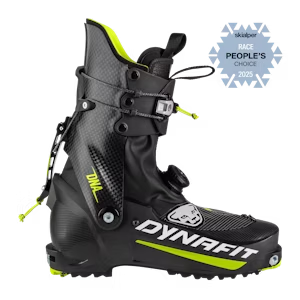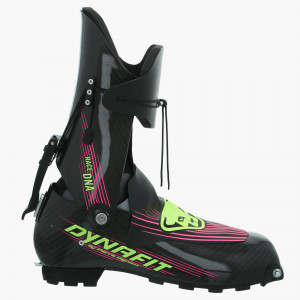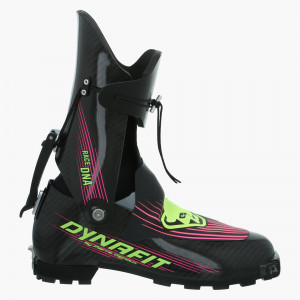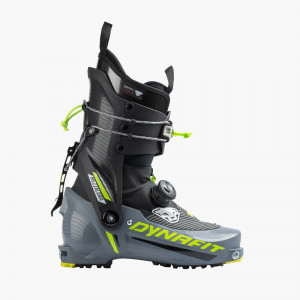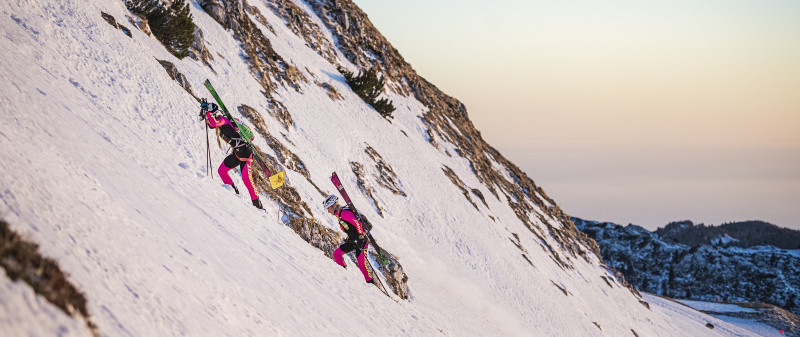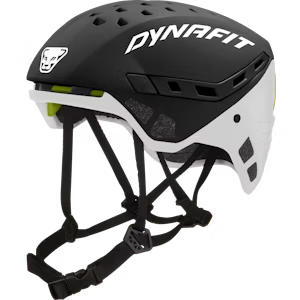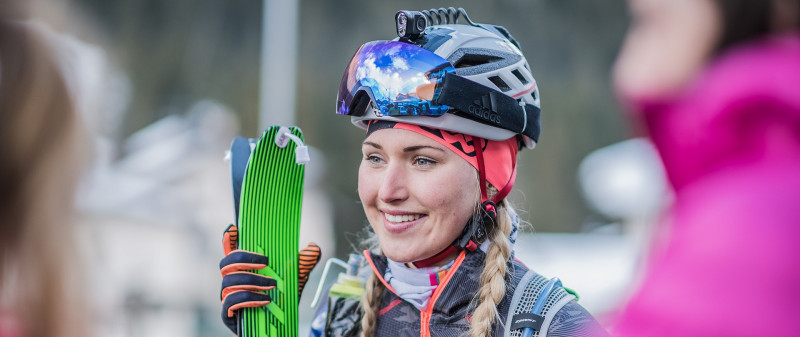Patrouille de Glacier, Mezzalama, Sellaronda, Erztrophy or Jennerstier – Ski mountaineering races are becoming more popular. But what is the difference really between equipment for a skimo race and equipment for everyday ski tours? We’ll introduce you to the special features and answer your questions about what it comes down to in a race against the clock.
Skimo racing is a high-intensity sport, thus the clothing must be breathable, regulate your body temperature and at the same time, it must also protect racers from wind and weather. For most races, it is mandatory to have a weather-protective layer such as a windproof jacket or rain jacket, suitable pants and at least one layer must fall longer on the body in case the weather drastically changes.
Specialized racing suits such as the DYNAFIT DNA Race Suit have many advantages. They fit like a second skin, are extremely light, and offer superior freedom of movement. Some of the DNA Race Suits elements include intelligent features such as an internal pocket to stash skins, loops that can be pulled over the boots, or cut-outs for quick access to the ski/walk mechanism. If you are looking to set yourself apart from the competition, we now offer the ability to create a custom race suit personally designed for you with the DYNAFIT Custom Race Suit.
Backpacks for use in skimo races are different from normal ski touring packs due to their lightweight, minimalistic construction and particular attention paid to good breathability. Depending on the race, safety gear such as an avalanche transceiver/beacon, shovel and probe are required to carry, which means a certain volume in the pack will be necessary. With the DYNAFIT DNA Backpack, you have an innovative ski attachment system or a Safety Box for safety gear accessible from the exterior.
Another important aspect to racing to consider, is staying hydrated. Backpacks for racing use thus usually have pockets for flasks or a water bottle holder and are compatible with popular hydration systems.
A helmet should be used on any ski tour, but with ski mountaineering races it is a mandatory rule to wear one. Traditional ski helmets are not suitable for skimo races, as race-appropriate ski touring helmets are very light and breathable. ISMF guidelines require that helmets must have dual certification, meaning they satisfy the standards for mountaineering as well as alpine skiing.
Some additional, yet standard equipment for ski mountaineering races are your skins and poles, as well as other accessories such as a climbing harness, rope, crampons or helmet headlamp. With backcountry races that have challenging terrain and are away from groomed ski areas, the list of required safety equipment can be quite comprehensive. In contrast, on-piste vertical races can also sometimes eliminate the requirement for an avalanche transceiver/beacon or a pack.
Weight is king! Not only with skis, bindings and boots, but also in accessories and apparel. Competitive skimo athletes seek the lightest, highest-performing equipment possible, which also has simple handling and impressive reliability.
Despite what different guidelines each race has, what holds true in ski mountaineering races is precisely what is also essential for normal ski touring: Be responsible and have equipment suitable for the weather conditions. In the end, it doesn’t help anybody if you save a few grams but are shivering from the cold while waiting for your teammate and lose energy.
Speedup! This is the equipment you need for your skimo race
Patrouille de Glacier, Mezzalama, Sellaronda, Erztrophy oder Jennerstier – Wettkämpfe im Skibergsteigen werden immer beliebter. Aber was unterscheidet eigentlich die Ausrüstung für ein Skitourenrennen vom Equipment für normale Skitouren? Wir stellen Euch die Besonderheiten vor und verraten, worauf es im Kampf gegen die Uhr wirklich ankommt.
Race equipment: Minimal weight for maximal speed
The path to the podium in ski mountaineering racing is very clearly dependent on weight. However, there are certain official rules regarding equal opportunity and safety. The limits and minimum requirements are determined by each race but are all based on the guidelines of the ISMF (International Ski Mountaineering Federation).
In general: Race equipment must be as light and high performance as possible and at the same time totally reliable. Every gram matters and there is no place or time for bulky or complicated equipment - comfort must take a back seat. DYNAFIT offers ski mountaineering racers a highly specialized Race Collection that leaves nothing to be desired, but demands the appropriate level of trained technique.
Race ski: Narrow and light
Competition-oriented touring skis are not built for fun little ski outings, they have been designed to be the fastest and most energy-efficient as possible. Specialized race skis, such as the DYNAFIT DNA or the Mezzalama, weigh in at a mere 700 and 800 grams and have a waist of about 65 mm. Race skis must have steel edges per ISMF guidelines and must have a minimum length of 160 cm for men and 150 cm for women. Race skis are shorter so that they are nimble and and easier to move when in motion.
Race binding: Minimalism, second to none
Ultralight Pin Bindings are indispensable for racing. These models focus on the bare essentials in order to shave off as much weight as possible. Comfortable heel risers or ski brakes are not part of these products, meaning race bindings can weigh in between 100 to 130 grams. ISMF rules state that bindings must have both vertical and lateral release and that you must be free heel when climbing. The lightest binding on the market today is the DYNAFIT P49 at a minimalist 49 grams – where the pins are affixed directly on the toes of the boot. That means stepping in and out of the binding, is even easier and more efficient.
Race boot: Fast climbing
Even for ski touring boots “less is more” when it comes to racing. According to ISMF, two locking systems are mandatory and the boots must reach over the ankle. Other than that anything is permitted. Specialized racing boots such as the DYNAFIT DNA are designed to offer maximum freedom of movement while also having minimal weight in order for you to move as fast as possible uphill - the transition from climbing to downhill is possible in just a few seconds! When it comes to insulation and stability, you must accept a few trade-offs. If you want to ski safely and fast with a purebred racing boot, you must truly be a good skier. Many ski mountaineers who race occasionally and participate in races for fun find a happy medium of stability, comfort and weight, when they select a very light Speed ski touring boot.
Racing suit like a second skin
Skimo racing is a high-intensity sport, thus the clothing must be breathable, regulate your body temperature and at the same time, it must also protect racers from wind and weather. For most races, it is mandatory to have a weather-protective layer such as a windproof jacket or rain jacket, suitable pants and at least one layer must fall longer on the body in case the weather drastically changes.
Specialized racing suits such as the DYNAFIT DNA Race Suit have many advantages. They fit like a second skin, are extremely light, and offer superior freedom of movement. Some of the DNA Race Suits elements include intelligent features such as an internal pocket to stash skins, loops that can be pulled over the boots, or cut-outs for quick access to the ski/walk mechanism.
Race pack: Compact and practical
Backpacks for use in skimo races are different from normal ski touring packs due to their lightweight, minimalistic construction and particular attention paid to good breathability. Depending on the race, safety gear such as an avalanche transceiver/beacon, shovel and probe are required to carry, which means a certain volume in the pack will be necessary. With the DYNAFIT DNA Backpack, you have an innovative ski attachment system or a Safety Box for safety gear accessible from the exterior.
Another important aspect to racing to consider, is staying hydrated. Backpacks for racing usually have pockets for flasks or a water bottle holder and are compatible with popular hydration systems.
Race helmet: Protection on the climb and on the descent
A helmet should be used on any ski tour, but with ski mountaineering races it is a mandatory rule to wear one. Traditional ski helmets are not suitable for skimo races, as race-appropriate ski touring helmets are very light and breathable. ISMF guidelines require that helmets must have dual certification, meaning they satisfy the standards for mountaineering as well as alpine skiing.
Skins, poles and more: Key extras
Some additional, yet standard equipment for ski mountaineering races are your skins and poles, as well as other accessories such as a climbing harness, rope, crampons or helmet headlamp. With backcountry races that have challenging terrain and are away from groomed ski areas, the list of required safety equipment can be quite comprehensive. In contrast, on-piste vertical races can also sometimes eliminate the requirement for an avalanche transceiver/beacon or a pack.
Race equipment in sum
Weight is king! Not only with skis, bindings and boots, but also in accessories and apparel. Competitive skimo athletes seek the lightest, highest-performing equipment possible, which also has simple handling and impressive reliability.
Despite what different guidelines each race has, what holds true in ski mountaineering races is precisely what is also essential for normal ski touring: Be responsible and have equipment suitable for the weather conditions. In the end, it doesn’t help anybody if you save a few grams but are shivering from the cold while waiting for your teammate and lose energy.
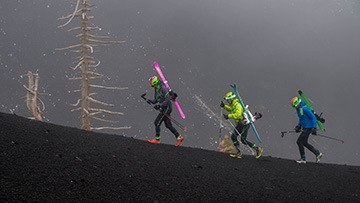
Etna Speed Rush
Read more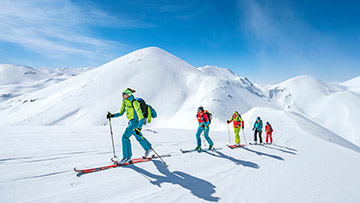
Ski Touring Crete
An experience report about an exotic ski touring trip to Crete, endless snow-covered expanse in the Lefka Ori mountains and Greek hospitality.
Read more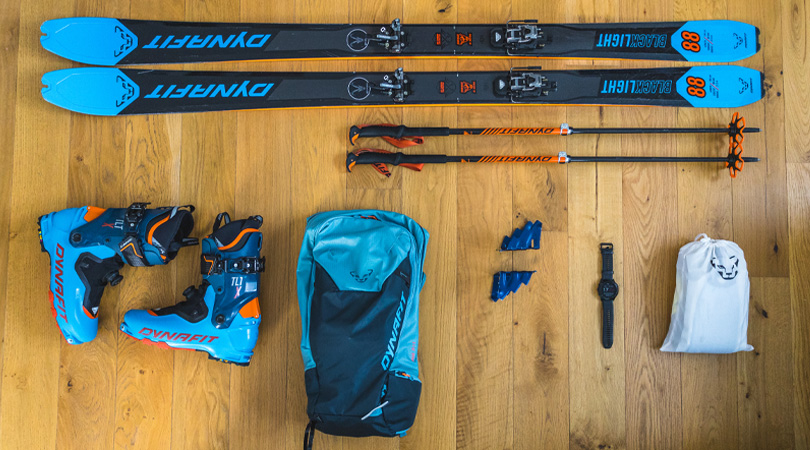
What's inside my skimo pack?
Are you planning a ski tour? Our packing list will help you optimize your preparation. From the right equipment to key essentials, you will find everything you need for the perfect ski tour.
Read more

